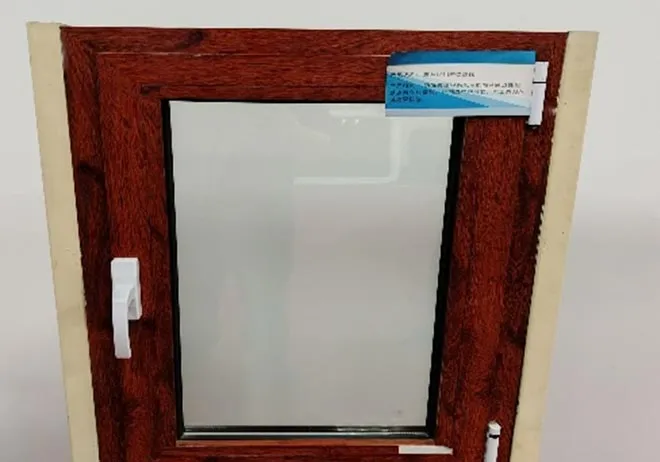Dec . 14, 2024 12:56 Back to list
Innovative Design of Reflective Glass Facades in Modern Architecture
The Aesthetic and Functional Appeal of Reflective Glass Facades
In contemporary architectural design, the use of reflective glass facades has gained significant prominence, transforming the skyline of urban landscapes while offering a multitude of functional benefits. Reflective glass, characterized by its shiny, mirror-like surface, plays a pivotal role in enhancing the visual aesthetics of buildings, as well as increasing energy efficiency and promoting environmental sustainability. This article delves into the various aspects that make reflective glass facades an appealing choice for modern architecture.
Aesthetic Appeal
One of the most striking features of reflective glass facades is their ability to redefine the visual character of a building. The glossy surface reflects the surrounding environment, creating a dynamic interplay between structure and nature. As light shifts throughout the day, the facade changes its appearance, often mirroring the sky, trees, and other buildings around it. This can create a stunning effect, allowing the building to seem to blend into its surroundings during certain times, while standing out impressively at others, especially at sunset or during the night when illuminated.
Moreover, reflective glass can be a tool for architectural storytelling. It allows for the incorporation of various colors and tints, enabling architects to manipulate light and shade effectively. When utilized correctly, these design choices can convey a sense of modernity and innovation, making the building visually appealing to passersby and enhancing the overall urban landscape.
Energy Efficiency
Beyond aesthetics, reflective glass facades offer significant energy efficiency advantages, aligning with the growing global emphasis on sustainability. The reflective properties of the glass reduce the amount of solar heat that enters a building. This control of thermal gain can lead to reduced air conditioning costs, as the interior climate remains cooler in hot weather. Consequently, buildings with reflective glass can achieve higher energy performance ratings, which is increasingly important as cities strive for greater energy efficiency standards.
Furthermore, the use of high-performance insulating glass can enhance the thermal envelope of a building, minimizing heating costs during colder months and further solidifying the appeal of reflective glass as a sustainable building material. The integration of reflective glass not only benefits the individual building's energy consumption but also contributes to the broader goal of reducing urban heat generation and carbon footprints.
reflective glass facade

Environmental Considerations
The environmental implications of using reflective glass in architecture extend beyond energy savings. As cities become more densely populated, the reduction of urban heat islands—a phenomenon where urban environments become significantly warmer than their rural surroundings due to human activities—becomes increasingly vital. Reflective glass facades can help mitigate these effects by reflecting sunlight back into the atmosphere, potentially lowering local temperatures.
Additionally, advancements in glass technology have led to the development of eco-friendly options. Many manufacturers are now producing reflective glass with low-E (low emissivity) coatings. These coatings not only reflect solar energy but also minimize the harmful effects of UV light, protecting both the building's interior and the health of occupants. This makes reflective glass an attractive option for buildings aimed at pursuing LEED (Leadership in Energy and Environmental Design) certification and promoting sustainable practices.
Practical Considerations
While the benefits of reflective glass facades are evident, there are practical considerations that builders and architects must keep in mind. Proper design and installation are crucial to prevent issues such as glare, which can be uncomfortable for both occupants and neighbors. Effective use of shading, control of window placements, and strategic architectural design can mitigate such drawbacks, ensuring that the reflective properties of the glass enhance rather than hinder the building's functionality.
Moreover, maintenance of reflective glass facades is essential. While modern coatings help keep glass clean for a more extended period, regular cleaning is necessary to maintain the aesthetic quality and functionality of the glass. Often, the striking appearance of reflective glass can quickly diminish if surfaces become dirty or stained.
Conclusion
Reflective glass facades represent a harmonious blend of beauty, functionality, and sustainability in modern architecture. They not only enhance the aesthetic appeal of buildings, making them landmarks in their urban settings, but also contribute significantly to energy efficiency and environmental sustainability. As architectural practices continue to evolve, the incorporation of reflective glass is likely to grow, offering innovative solutions that cater to both the needs of architecture and the aspirations of a sustainable future. Embracing reflective glass facades is not merely an aesthetic choice; it is a step towards more responsible and engaging architectural environments.
-
Safety and Style with Premium Laminated Glass Solutions
NewsJun.24,2025
-
Reinvents Security with Premium Wired Glass
NewsJun.24,2025
-
Premium Float Glass Line for Modern Architecture
NewsJun.24,2025
-
Low Emissivity Glass for Energy-Efficient Architecture
NewsJun.24,2025
-
High-Performance Insulated Glass Solutions for Modern Architecture
NewsJun.24,2025
-
Elevates Interior Style with Premium Silver Mirror
NewsJun.24,2025
Related PRODUCTS














